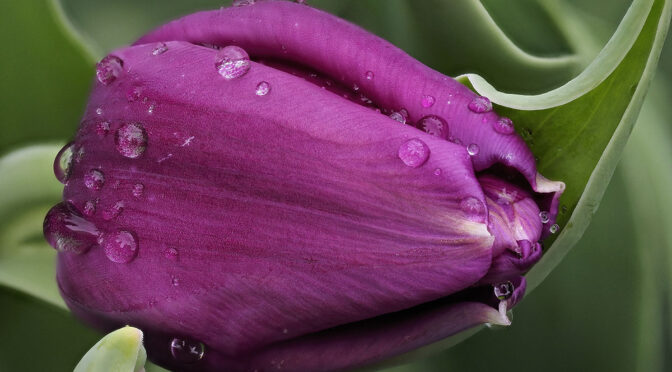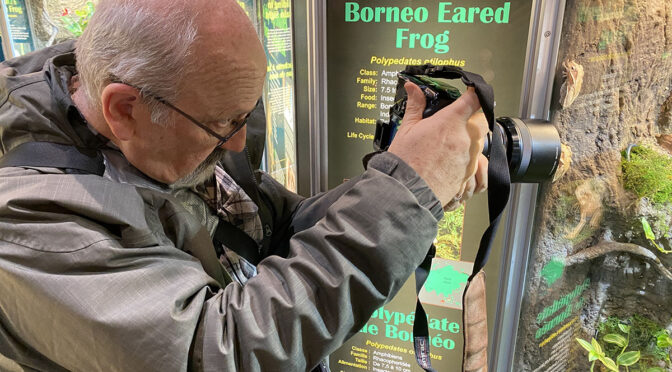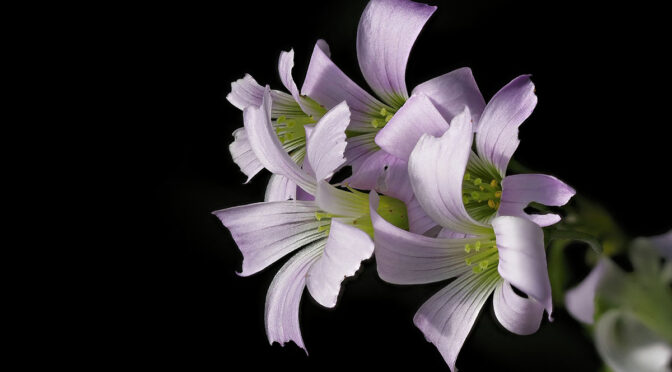Yesterday I took some time to do a handheld HDR macro test using some of the flowers in my yard as subjects. Like many photographers I enjoy macro photography of flowers. I’m often out at open garden events and other locations in bright, harsh sunlight… which is far from ideal. I’ve been wondering for a while now if I could use the in-camera HDR function of my E-M1X to help deal with harsh lighting conditions.
Category Archives: Macro
Blossoms in the Rain
This article features some images of tulip blossoms in the rain, captured handheld using in-camera focus stacking during a recent visit to the Royal Botanical Gardens (RBG) in Burlington Ontario.
Flower Macro Images
This article features a selection of uncropped flower macro images which were recently captured handheld at the Royal Botanical Gardens in Burlington Ontario.
As photographers we typically compose our images to avoid any kind of cropping if at all possible. This helps ensure that we can get as many pixels as possible on our subject matter. Some photographic genres are more difficult than others when it comes to capturing full frames, and avoiding any cropping. Handheld in-field macro photography can be tricky at times.
Frogs with 2 Tubes
This article features some close up images of frogs captured handheld with 2 extension tubes and the M.Zuiko PRO 40-150 mm f/2.8 zoom lens. As photographers we sometimes only consider a macro lens when planning to do some close up or macro photography. We forget that fitting a good quality zoom lens with extension tubes can create a very flexible and capable set-up for close up photography.
Shooting Style
Before investing in camera gear it is critical that we have a clear understanding of our shooting style, as this helps us avoid making gear purchase mistakes.
In a previous article, I recently let readers know that I would not be
purchasing the M.Zuiko PRO 90mm f/3.5 Macro IS lens. I received a few emails from readers requesting more information and explanation.
M.Zuiko 90mm Macro
OM Systems has introduced the M.Zuiko 90mm macro f/3.5 lens which features IS Sync, focus limiter, and the ability to accept teleconverters. Since I won’t be doing a review of this lens or purchasing one in the future, I thought readers would like access to some early information on this lens. Continue reading M.Zuiko 90mm Macro
HHFS Frog Images
This article features a selection of handheld focus stacked HHFS frog images that were captured at the Royal Botanical Gardens using an M.Zuiko 60 mm f/2.8 macro lens. As noted in a previous article, my E-M1X was set to 10 focus stacked frames with a focus differential of 4.
Slow Shutter HHFS
This article discusses using slow shutter speeds with handheld focus stacking (HHFS), and shares some new macro snake images captured with shutter speeds from 1/20 to 1/4 of a second.
Yesterday I visited a special frog display at the Royal Botanical Gardens… which also happened to have a trio of water snakes in one of the exhibits. The event gave me the opportunity to get some practice time in doing handheld in-camera macro focus stacking. Continue reading Slow Shutter HHFS
Handheld Macro
This article discusses handheld macro photography and why I prefer using my Olympus E-M1X and M.Zuiko 60 mm macro lens over the full frame gear I owned in the past.
As regular readers know, I very much dislike using a tripod and only do so when it’s absolutely necessary. In the past when I tried to create handheld macro images with my full frame equipment I would very seldom get any useable images. I simply could not hold my full frame equipment steady enough. It was an exercise in frustration. My full frame gear always seemed to get in the way of my creativity.
Completing the Vision
As photographers we understand that completing the vision involves doing some work with our images in post processing. Each of us has our own skill level and approach when it comes to post processing, as well as our preferred software programs. We have a very specific vision in our minds for how we want our finished photograph to appear and often capture an image as an interim step towards that vision.










